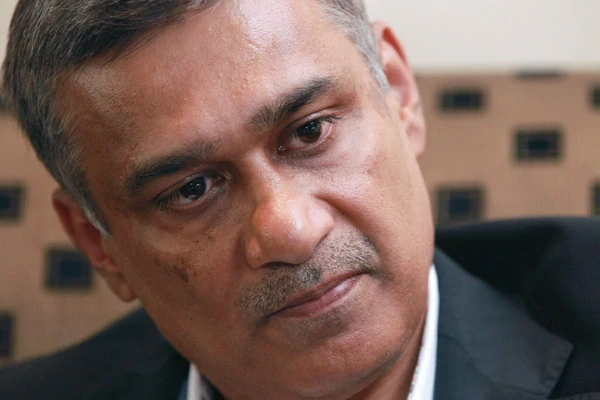
A global leader in advertising JWT has through time earned a formidable reputation on its professional and creative capabilities in the industry. Colvyn J Harris, its Chief Executive Officer for India during his official visit to Sri Lanka shared his insight from his three decade long journey at JWT, of challenges met, lessons learnt and modern global advertising trends that need to be harnessed to take advertising through to the next frontier.
By Kamalika Jayathilaka
“We deliver to our clients some of the best, most powerful global brands anybody in advertising can hope for on a consistent basis. We have committed professionals with specialist skills across the world and own one of the strongest global networks to transfer learning and brand ideas seamlessly, which are some of the pillars of our success,” explained Colvyn Harris highlighting the defining factors behind JWT’s success as a global player, which has today expanded to nearly 10,000 employees in more than 200 offices in over 90 countries across the globe.
India has one of the largest JWT operations and has made its mark by winning two Advertising Grand Prix awards, both for the first time for India, the Cannes Grand Prix for the Lead India campaign, and India’s first Titanium Lion in the integrated category, and is today the front runner among India’s award winning advertising agencies. Proudly acknowledging JWT India’s achievements under his leadership Harris pointed out that it is as a result of effective advertising through the increased quality of their creative products, which has been improving consistently.
“The economy in India is strong and we have been more than fortunate as many businesses are dependent on the domestic market. The strong effects of a depressed economy that were globally felt across the advertising industry during the past few years leading up to 2010 had little impact on our business,” added Colvyn Harris. However, when there is a slow-down, clients begin to understand the power of advertising and what can be done, and should be done in a recession. As the market or the categories begin to shrink, one must increase or improve market share. As a result, volumes are maintained, leading to growth. In turn, a far more effective product is delivered to the client. This according to Harris is behind the success story of JWT India. “The challenge was to deliver to clients’ ambition and objective. Deliver to the team and keep them intact. There was anxiety amongst people as to what would happen but we were able to strongly keep both these elements firm and fixed,” explained Harris.
“This Is A Business Where You Have To Give It Your All, You Cannot Be Weak, You Have To Be Curious, You Have To Want To Understand Every Category And Every Brand And Every Business You Partner; You Need To Make An Effort To Understand The Trends Around Consumers…”
In a day and age where television and newspapers are losing their effect the trend is shifting towards the digital and social media; and across the world, especially in the western markets such as North America and the UK, digital media reigns. Whilst in some of the countries it may not be at the forefront – it is definitely an area to invest in. “Being Asian, we are still in a market where television is dominant. Typically of any budget at least 90 percent is allocated into television. However, currently, we are in the process of building our digital capabilities, so that as and when that part of reaching out to the consumer develops, we would already have the skills and learning to do so. If an advertising agency doesn’t invest in these skills and capabilities – they’re going to lose,” added Harris.
On the other hand, the Asian region is doing very well, commented Harris maintaining that over the next five years at least up to five percent GDP growth will positively affect the advertising industry. Creative development is growing rapidly. There are neo markets, development markets and emerging economies, where there is much action and potential. “If you counterpoint that with the rest of the world, for example Europe – there is a slow-down. At this point of time, I prefer being in this part of the world, than being in Europe where there is no real growth,” expressed Colvyn Harris.
India and Sri Lanka have very similar cultures. It is often observed that both countries are driven by universal ideas, and Indian creative products are often used in Sri Lanka. “I don’t see why an idea developed in India, cannot be moved across to Sri Lanka, but having said that acquiring local insight is the best way to go” he said adding that Sri Lanka being a cou ntry with fewer people, the industry is small and therefore the scale of business is smaller. “But Sri Lanka has talent and the potential to grow will happen overtime. The country has just emerged from an unfavourable situation, therefore as Sri Lanka’s economy does better, you will find that people will start doing better again,” he asserted.
The next frontier for the advertising industry is to understand the digital world better. Colvyn Harris said “this is a business where you have to give it your all, you cannot be weak, you have to be curious, you have to want to understand every category and every brand and every business you partner; you need to make an effort to understand the trends around consumers, what drives them, what can influence behaviour; you have to understand what is happening in the world in order to try and ride those trends; but most importantly, you have to believe that you can make a difference. When you live up to these promises success will follow.”





